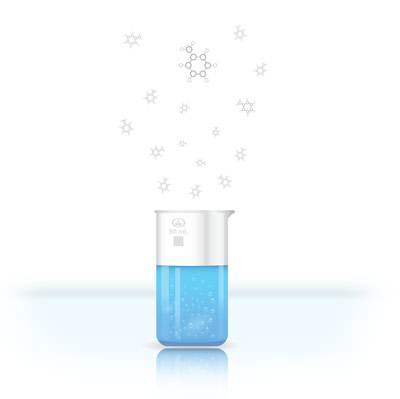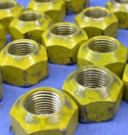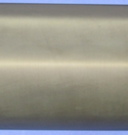Getting Around Volatile Organic Compounds with Aqueous Cleaning Products
Before we look at ways to avoid or eliminate Volatile Organic Compounds (VOC’s), we should take a minute and define what VOC’s are. VOCs are basically chemicals that contain carbon and evaporate at room temperature and pressure. The term includes all sorts of common solvents (e.g. mineral spirits-based parts washer solutions, methanol, etc.) and even common everyday items like paints, deodorants, and cleaning products.
 As defined in Federal Regulation, 40 CFR Part 51.100(s), VOCs are any carbon compounds, excluding carbon monoxide, carbon dioxide, carbonic acid, metallic carbides or carbonates, & ammonium carbonate, that participate in atmospheric photochemical reactions.
As defined in Federal Regulation, 40 CFR Part 51.100(s), VOCs are any carbon compounds, excluding carbon monoxide, carbon dioxide, carbonic acid, metallic carbides or carbonates, & ammonium carbonate, that participate in atmospheric photochemical reactions.
As VOCs evaporate and chemically react with car emissions and other pollutants they form ground-level ozone (i.e. smog). Ozone is a reactive compound that attacks the lungs, contributing to respiratory problems such as asthma, pneumonia and bronchitis, and according to the United States Environmental Protection Agency (EPA), VOCs can have other negative health effects like eye, nose and throat irritation, headaches, liver and kidney damage, and some have even been linked to cancers.
So by all accounts, VOC’s are considered to be very harmful to us and the environment in general.
In an effort to improve and control air quality standards The Clean Air Actwas initiated in 1970, which aimed to regulate air emissions from stationary and mobile sources. Since then, VOCs have been regulated as “ozone precursors” under the U.S. Clean Air Act and other individual state laws. To reduce ozone levels, the EPA has issued regulations to reduce VOC emissions from a wide array of sources, including cleaning products. Sometimes, in the case of cleaning products, the regulations do not eliminate the use of VOCs, but rather limit the amount of VOCs that can be used in product categories.
VOC limitations are always evolving as states constantly release new limitations and expand the reach of standing regulations.
For example, the regulation of VOCs involves using a “relative reactivity” rank to judge a chemical’s potential to contribute to the formation of ground-level ozone. This is based on the fact that individual VOCs vary in degree and potential to damage the environment.
Another instance of changing regulations is happening in Delaware, where the state's Department of Natural Resources and Environmental Control is developing a revision to the state’s “Solvent Cleaning and Drying” regulations. The revised regulation will mandate the use of a degreasing solvent in parts washers containing less than 25 g/L of volatile organic compounds (VOCs).
So for businesses who are either regulated to reduce VOC’s or who are taking a more proactive approach to reducing and eliminating potentially hazardous and harmful chemicals in the workplace, there are a couple of low VOC options to choose from: Specialty Solvents or Aqueous Cleaners. Due to the high costs of many specialty solvents, most businesses are turning to aqueous (water based) cleaners as their primary low VOC solution. And while some may think that aqueous cleaning technologies are still relatively new, aqueous technologies and chemistries have been around now for more than 20 years and continue to grow substantially every year.. In fact there are now hundreds of aqueous cleaner formulations in the market today.
Most of Armakleen’s aqueous cleaners meet all applicable VOC laws, and many of its products contain absolutely no VOCs, instead of just the limited amounts.
 Even though they clean differently, aqueous cleaners actually perform just as well as solvents—you just need some heat and some form of mechanical action, which is typically provided by the parts washing equipment they are used with. If aqueous cleaners are combined with the correct parts-washing equipment, they’ll remove soils like grease, oil, rust, paint, ink and adhesives from most metal and plastic surfaces just as effectively as any harmful solvent – and come along with the benefits of automation, eliminating the manual aspect of cleaning.
Even though they clean differently, aqueous cleaners actually perform just as well as solvents—you just need some heat and some form of mechanical action, which is typically provided by the parts washing equipment they are used with. If aqueous cleaners are combined with the correct parts-washing equipment, they’ll remove soils like grease, oil, rust, paint, ink and adhesives from most metal and plastic surfaces just as effectively as any harmful solvent – and come along with the benefits of automation, eliminating the manual aspect of cleaning.
Opting for an aqueous cleaning solution such as the ARMAKLEEN™ 4 in 1 Cleaner, which is used at half of the concentration of normal single purpose cleaners, provides companies with several advantage like reduced time, cost, and the liability that comes along with discharging hazardous chemicals into the air and water.
When you commit to aqueous cleaning products, it’s important to beware as a buyer—some businesses may use unproven cleaning solutions that will not be effective. When purchasing a new product, keep the basics in mind and do research into how long they’ve been in operation, the kinds of technicians and EH&S experts they have on-board and if they offer guarantees.
- Log in to post comments




